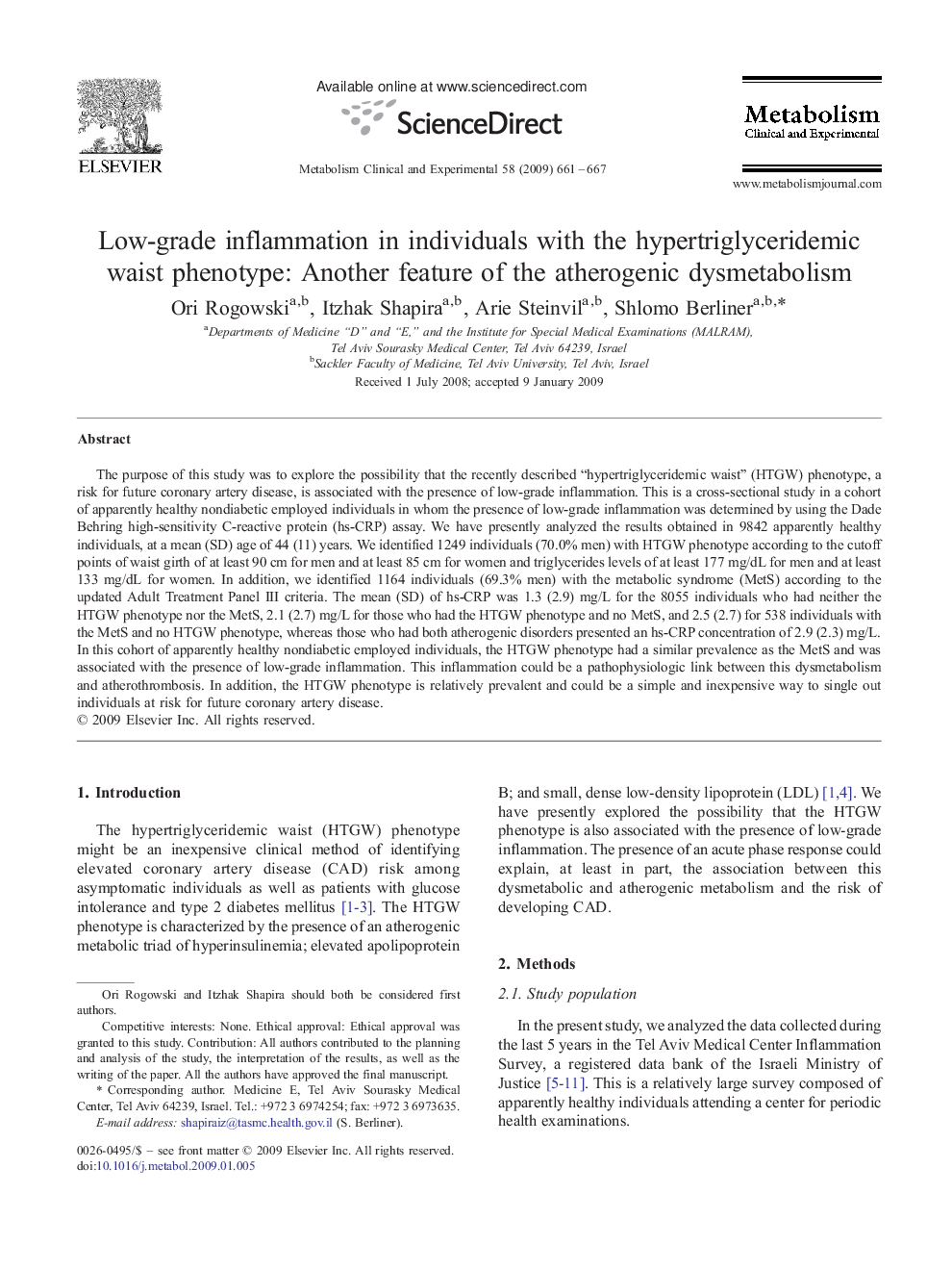| Article ID | Journal | Published Year | Pages | File Type |
|---|---|---|---|---|
| 2807324 | Metabolism | 2009 | 7 Pages |
The purpose of this study was to explore the possibility that the recently described “hypertriglyceridemic waist” (HTGW) phenotype, a risk for future coronary artery disease, is associated with the presence of low-grade inflammation. This is a cross-sectional study in a cohort of apparently healthy nondiabetic employed individuals in whom the presence of low-grade inflammation was determined by using the Dade Behring high-sensitivity C-reactive protein (hs-CRP) assay. We have presently analyzed the results obtained in 9842 apparently healthy individuals, at a mean (SD) age of 44 (11) years. We identified 1249 individuals (70.0% men) with HTGW phenotype according to the cutoff points of waist girth of at least 90 cm for men and at least 85 cm for women and triglycerides levels of at least 177 mg/dL for men and at least 133 mg/dL for women. In addition, we identified 1164 individuals (69.3% men) with the metabolic syndrome (MetS) according to the updated Adult Treatment Panel III criteria. The mean (SD) of hs-CRP was 1.3 (2.9) mg/L for the 8055 individuals who had neither the HTGW phenotype nor the MetS, 2.1 (2.7) mg/L for those who had the HTGW phenotype and no MetS, and 2.5 (2.7) for 538 individuals with the MetS and no HTGW phenotype, whereas those who had both atherogenic disorders presented an hs-CRP concentration of 2.9 (2.3) mg/L. In this cohort of apparently healthy nondiabetic employed individuals, the HTGW phenotype had a similar prevalence as the MetS and was associated with the presence of low-grade inflammation. This inflammation could be a pathophysiologic link between this dysmetabolism and atherothrombosis. In addition, the HTGW phenotype is relatively prevalent and could be a simple and inexpensive way to single out individuals at risk for future coronary artery disease.
